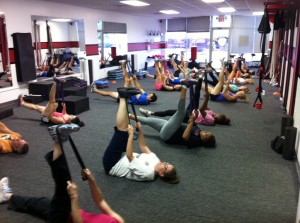
by Dave Gleason, IYCA Director of Youth Fitness
With the rapid rise of youth fitness and sports performance training options, programs and businesses popping up these days, it is important to discuss a very important topic as well as answer an extremely common question.
What is appropriate equipment for training youth athletes?
Before we dive into what can be deemed appropriate versus what equipment should be cautioned against—and certainly before I disseminate a broad list of equipment or once more include descriptions on how to use it—we need to put some parameters around a few things first.
For the purposes of this article, the term “young athlete” refers to boys and girls ages 6-13.
Developmentally appropriate fitness equipment is a loose term. We will discuss the needs of young athletes FIRST and how any piece of equipment can be considered as such.
Stop thinking “appropriate” and start thinking “optimal” for long-term athletic development.
My first point (chronological age) is pretty self-explanatory. However, what should be considered developmentally appropriate fitness and sports performance training for young athletes ages 6-13? The following is based off of tenants of the IYCA Level 1 Youth Fitness Specialist Certification and by extension, the programming templates we use in my facility (samples can be found in the programming section of the IYCA of Youth Conditioning and Fitness text book). 1
Guided Discovery: 6 to 9 years old
- Movement exploration/discovery
- Object manipulation
- Coordination training
- Cooperation/gameplay
Exploration: 10 to 13 years old
- Muscle activation
- Active range of motion
- General preparation
- Coordination training
- Systemic strength
- Gameplay
Your equipment is not your program. The relationships and connections you make with your young athletes combined with your programming will create the experience and culture you need to grow a strong business. If your main selling point for your program or business is equipment, you are setting yourself up for short term success at best.
Many types equipment can be utilized in a program if you have your template set correctly. For example, the novelty of a high-speed treadmill will eventually wear off for most young athletes. A piece of equipment such as a treadmill has room for only one user at time. Once more, not ALL young athletes will find it fun.
When I look to make equipment purchases for our facility, the first two factors I think about are a) how many users can participate with the equipment and b) how many purposes can it serve for my young athletes.
I caution against equipment such as scaled-down or miniature selectorized type equipment, exertainment equipment, and conventional weight training equipment such as straight bars, dumbbells, and the like, because most times they don’t pass my initial two questions. Although, most equipment can have its place in the programmatic structure of training young athletes, an increase of physical literacy and physical culture is the number one priority.

Here is a short list of appropriate equipment for this age group:
- Free weights
- Battle ropes
- Dodge balls
- Dynamax balls
- Plyo boxes
- Bosu balls
- Mini hurdles
- Agility ladders
- ValSlides
- Sandbells
- Tires
- Jump ropes
- Foam rollers
- Mini bands
- Resistance bands
- Monkey bars
- Climbing nets
- Balance beams
- Hula hoops
- Cones
- Railyard Fitness System
- Lebert Equalizers
- Balance pods
- Agility discs
Use of these types of tools should be done with the goal of increasing movement capability. For example, agility ladder training for the sake of becoming better or more capable of performing with the agility ladders should not be the goal. Transference to sport and life is the ultimate purpose. Being able to incorporate tools such as an agility ladder can add short-term fun as well.
All of the above equipment choices can have a positive impact, if used correctly.
Think outside the box!
If you have battle ropes in your facility you need not only have your young athletes attempt waves, snakes, or hip tosses to promote object manipulation, spatial awareness and systemic strength.
Equipment for Training Youth Example 1 – Battle Rope Relay
Organize your young athletes into two “teams,” each standing in line behind one end of the battle rope (placed on the ground in a straight line). The first athlete in line picks the rope up and holds it like a baton. On your command, each athlete runs to the opposite line and hands the battle rope off to the next athlete in line.
If the two rope ends find themselves on one side, the game is over. This is opaque competition because there is no clear-cut winner or even delineated teams once the game begins.
Equipment for Training Youth Example 2 – Giant Letter Game
Have each young athlete hold the battle rope. Every athlete must have at least one hand on the rope at all times. On your command, the “team” will create a giant letter or number on the ground with the battle rope. Begin with a simple letter such as the letter “O” and progress as far as you feel your young athletes can go.
Reference:
1. Brooks T PhD, Stodden D PhD. Essentials of Youth Conditioning and Fitness, Second Edition. Lubbock TX: Chaplain Publishing; 2012.


Hi Dave … I have a question about your firefighter game that I recently watched on you YouTube channel. I love the thinking outside of th box and I want to incorporate it into my PE classes.. What age do you feel works the best for is ??? I teach grades 1-5 but thinking it might be a little too elementary for grades 4-5. Thanks for the help